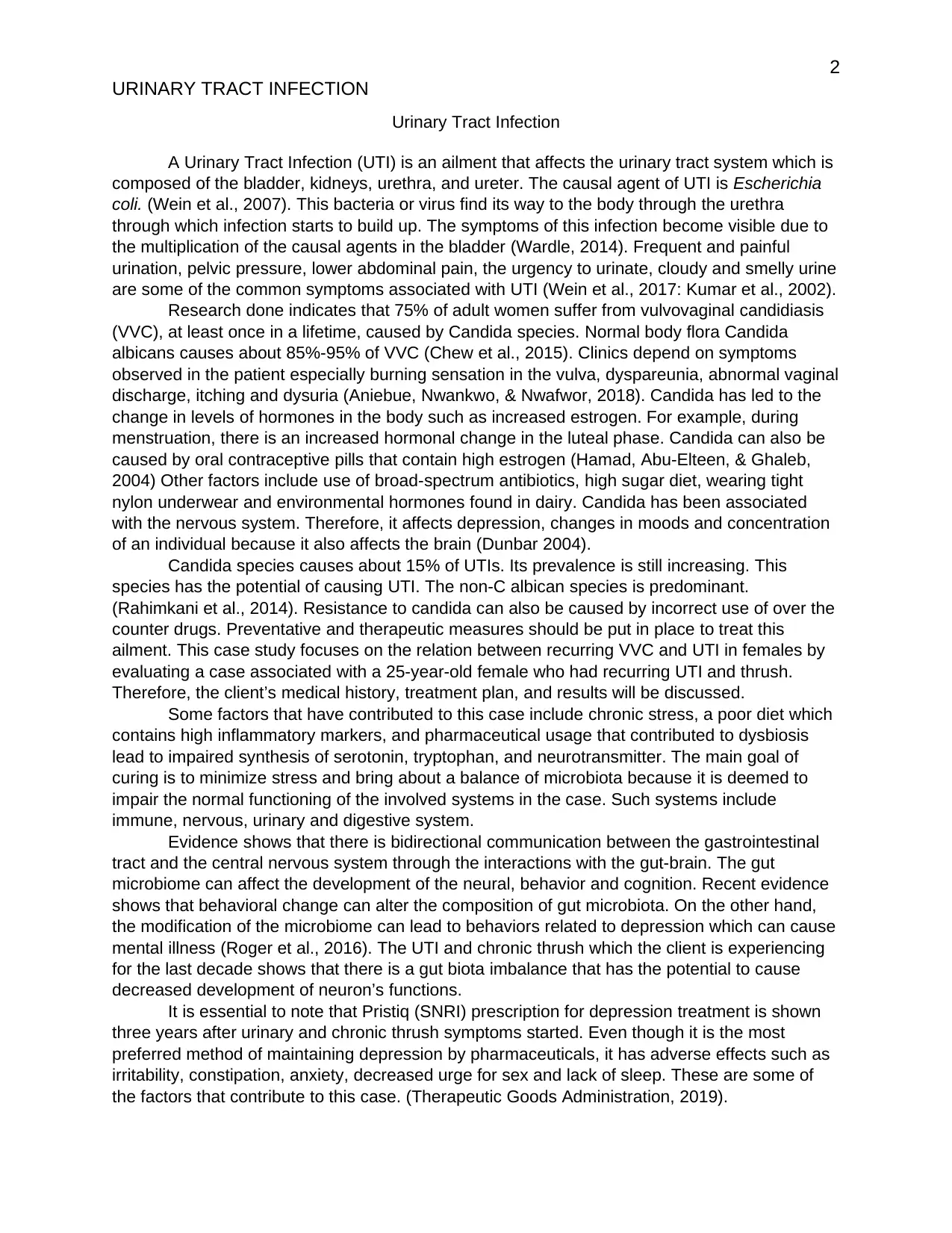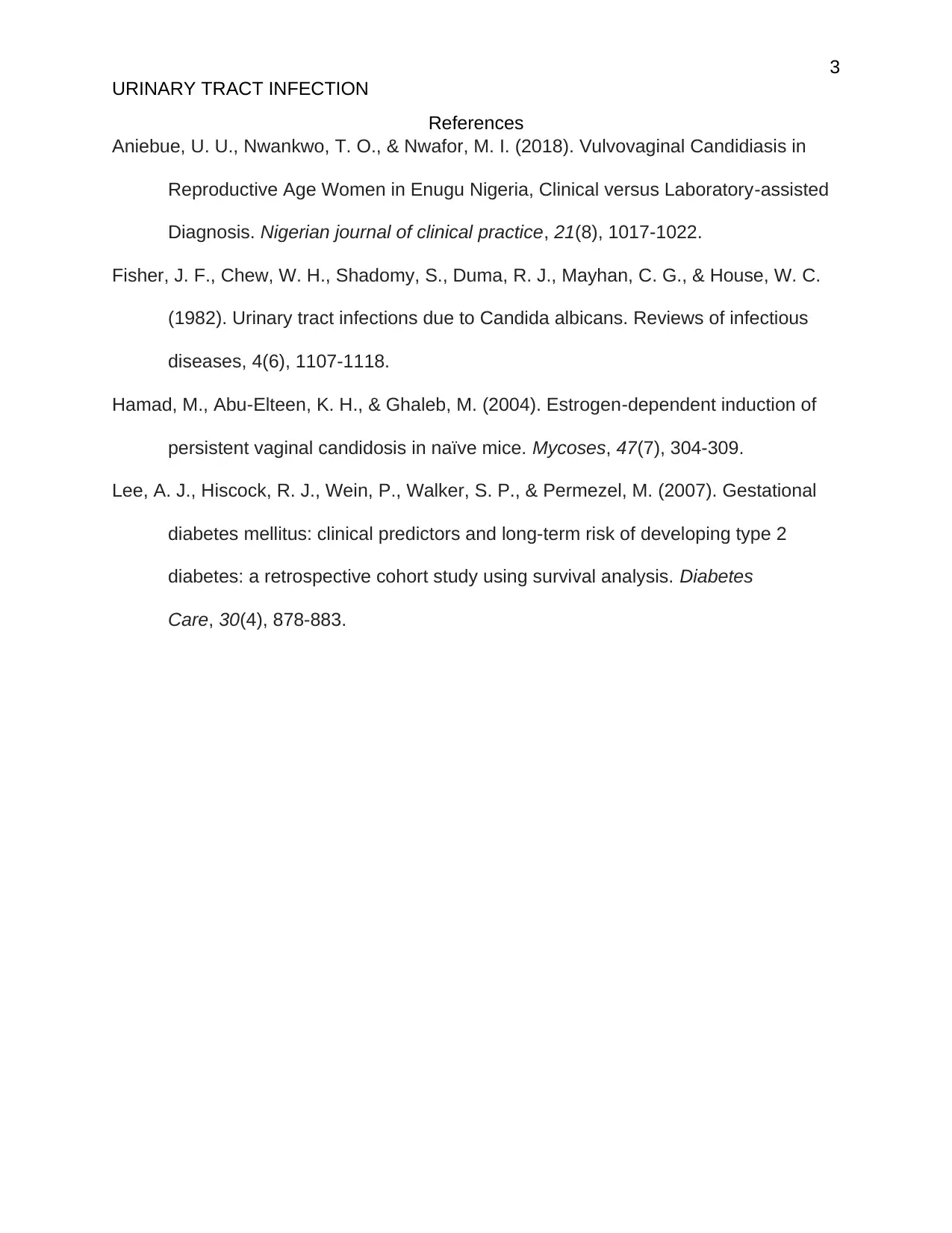Analysis of Recurring UTI and Vulvovaginal Candidiasis Case Study
VerifiedAdded on 2023/01/19
|3
|961
|89
Case Study
AI Summary
This case study investigates the relationship between recurring Urinary Tract Infections (UTIs) and Vulvovaginal Candidiasis (VVC) in a 25-year-old female. It explores the patient's medical history, focusing on the interplay of factors like chronic stress, poor diet, and pharmaceutical usage, which contributed to dysbiosis and impaired neurotransmitter synthesis. The study highlights the symptoms of UTI and VVC, which are caused by Escherichia coli and Candida species respectively. The primary goal of the treatment is to minimize stress and restore the balance of microbiota to improve the function of the immune, nervous, urinary, and digestive systems. The case study emphasizes the bidirectional communication between the gut and the brain, and the impact of the gut microbiome on neural development and behavior. The study also discusses the adverse effects of Pristiq (SNRI) prescription for depression and its contribution to the patient's condition. The study concludes by discussing the importance of preventative and therapeutic measures to treat these ailments. The provided case study highlights the need to treat the underlying causes of the recurring infections.
1 out of 3










![[object Object]](/_next/static/media/star-bottom.7253800d.svg)